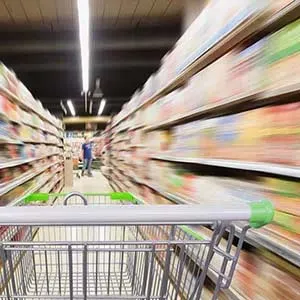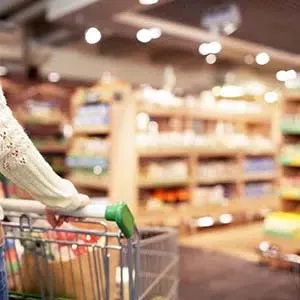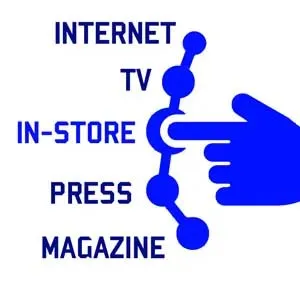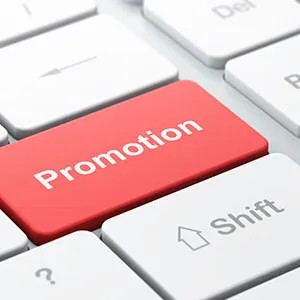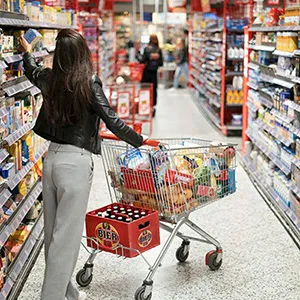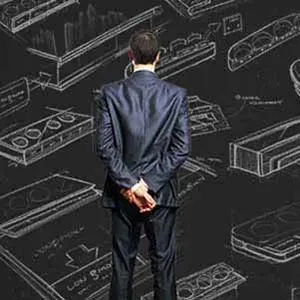- About the Branded Bay -
From Shelf Space to Desire:
When the Shelf Tells the Brand Story
1000 words
#brandactivation #retailinnovation #instorexperience
Oct 2025 — bh
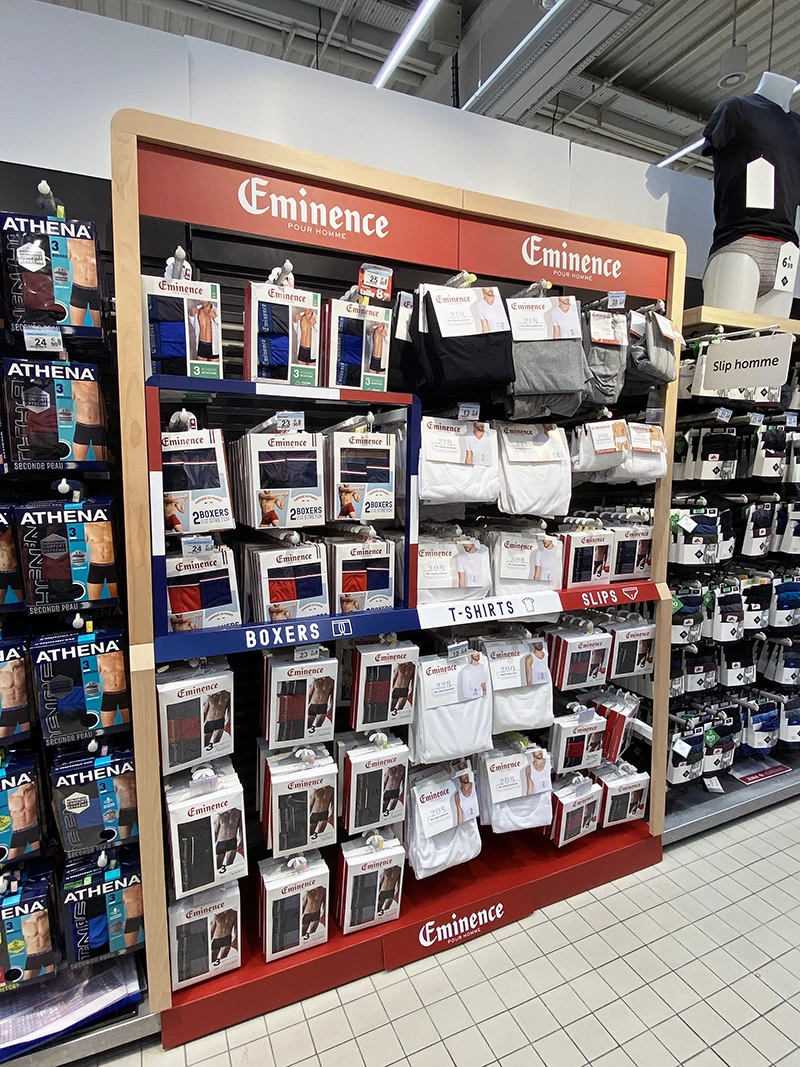
In supermarkets, hypermarkets, or specialty stores, you may notice larger sections of the aisles that immediately stand out. Every product belongs to the same brand, and the design, colors, and signage on the shelves are consistent.
That’s what in-store marketers, retail designers, and POS specialists call a branded bay — the term bay refers to a single shelving module, typically 1 to 1.3 meters wide, which serves as the basic building block of an aisle.
A brand block is a defined section of shelving reserved exclusively for a larger assortment of a single brand, presented as a collection rather than dispersed across segments. Brand blocking can cover part of a shelving module, one full unit, or several units, standing out visually through its scale alone.
A branded bay takes things a step further in terms of display. The presentation, colors, imagery, and messaging are all carefully crafted to reflect the brand’s identity.
In short, it’s a miniature boutique on the shelf — a strong visual anchor point that connects with shoppers and drives purchase.
For similar concepts, various terms are used, such as shelf-on-shelf display, on-fixture display, shelf dressing, or shelf enhancement. They refer to the solutions that help brands strengthen their visibility on the shelves where they are most often sought — their primary placement.
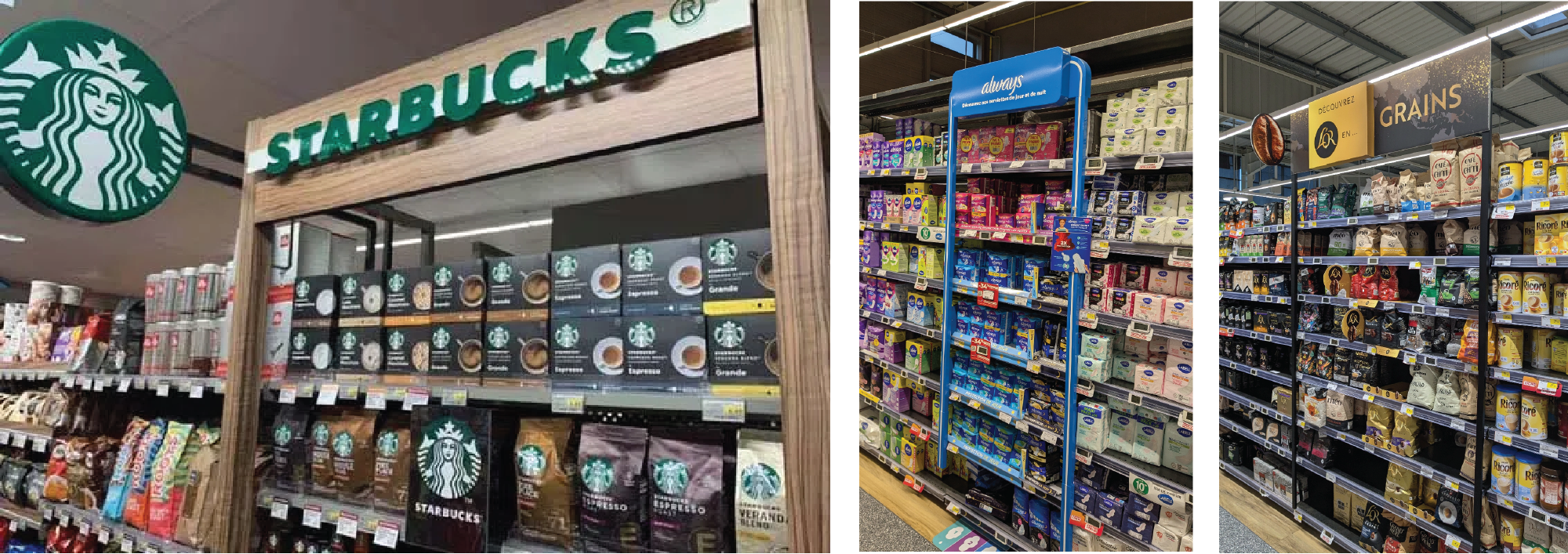
This article explains what branded bays are, why brands invest in them, and what the possible design solutions are for creating effective long-term branded bays.
Pilotes specializes in the design of commercial furniture, displays, and merchandising solutions for retail and stores. We offer 100% customized point-of-purchase materials tailored to the in-store projects of brand and retail. Because we care about the climate and environment, we analyze the lifecycle of each project to avoid, reduce, and offset its impact 🌍🌿
Do you have a project planned? Contact us and let’s bring your vision to life together!
Why Brands Invest in Branded Bays ?
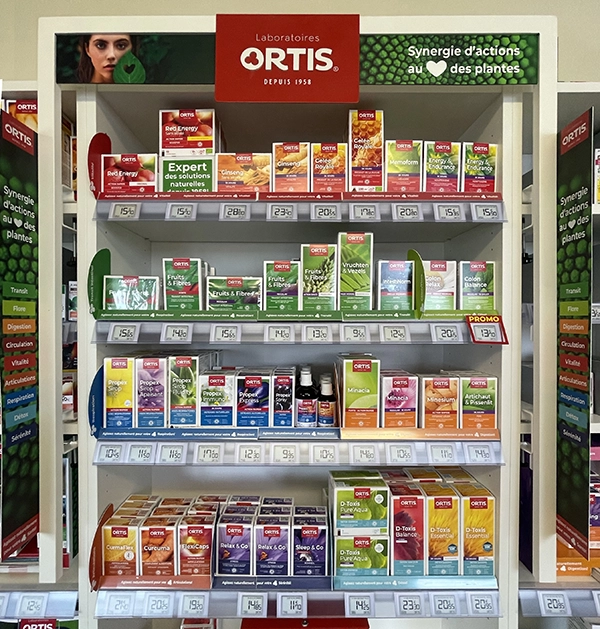
Retail shelves are busy and hyper-competitive. During an average shopping trip, shoppers are exposed to thousands of products, each one more colorful than the next. An attractive package isn’t enough — the battle for attention is ruthless. In stores, products either make it, or they fade away — no matter how much manufacturers’ R&D departments have invested to create them. A branded bay gives a brand a powerful advantage: control over the in-store experience at its main aisle, while potentially enabling product extensions.
By creating a consistent brand experience, the brand ensures that its story continues all the way to the moment of purchase. After investing in media and storytelling outside the store, this is the moment of truth — on this final meter, the majority of purchase decisions are made.
There’s also a commercial dimension to consider. Shelf space comes at a cost, and conversations between brand manufacturers and retailers often include in-store visibility. A branded bay helps secure these relations and ensures consistent execution at store level.

For retailers, the benefits are equally clear. Branded bays often involve investments from the brand manufacturer, allowing the store to refresh and energize its appearance at minimal cost. They also help organize the aisle, making the shopping experience smoother and more visually appealing.
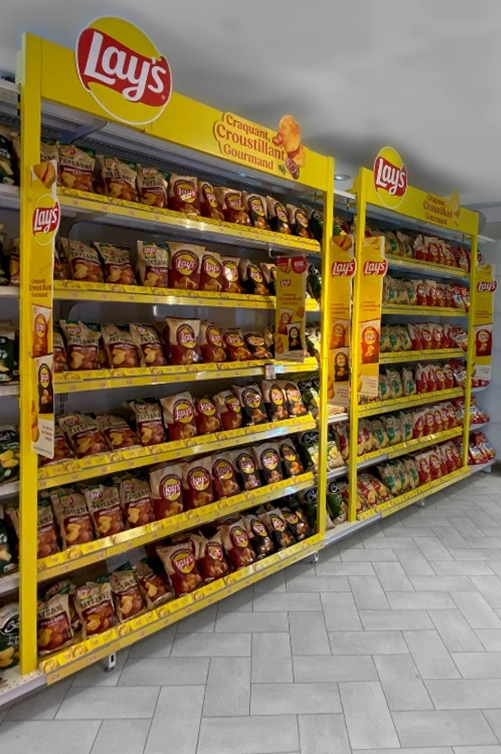
When a branded bay is used for established or popular brands, it often serves as a visual anchor point that helps shoppers navigate the category.
“Most shoppers aren’t deciding – they are finding.” — Mike Anthony (source).
Recognizable brands help them find their way through segments — something customers appreciate, as they rarely read written signage (unless they’re completely lost).
Designing an Effective Long-Term Branded Bay
Branded bay efforts come in many forms and offer endless possibilities. Some brands work with materials fixed onto existing shelves:
- such as signs, frames, fronts, fins, liners, strips, cards and signage,
- to add color, logos, sharp visuals, and compelling messaging.
To create a recognizable presence, design, form, and material selection align with the brand’s DNA.
Related article > Retail shelving: the techniques and solutionsAll materials must also be developed to withstand the wear and tear of the retail environment. There are many types of fixation solutions available to ensure that materials can be attached to virtually any type of shelving—a challenge that should not be underestimated.
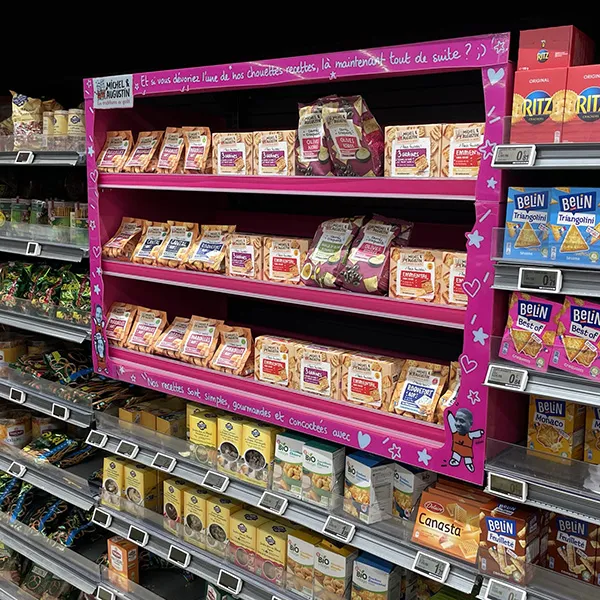
Some brands go beyond standard shelving. They may remove a bay from the linear layout—or even some of the shelves — and replace it with an independent display, or a shelf-on-shelf unit. This approach opens up limitless opportunities for brands and retailers to be creative with design, colors, lighting, imagery, and product layout, resulting in a more engaging and memorable shopping experience. These solutions are typically developed for long-term installation.
Equally important is balance: the display must stand out without disrupting the store’s overall flow. Close collaboration with retailers ensures that the branded bay complements adjacent segments and enhances the customer journey rather than overwhelming it.
Creating a successful branded bay requires a blend of creativity, technical expertise, and retail insight. To maximize its effectiveness, it’s best to entrust the design and execution to a POS specialist — someone who understands retail shelving, materials, shopper behavior, and branding. The result is a display that not only attracts attention but also drives conversion and builds lasting brand equity in-store.
Curious how we can transform the shelves you sell from into powerful brand spaces? Contact us today — let’s create the perfect branded bay for your brand.
